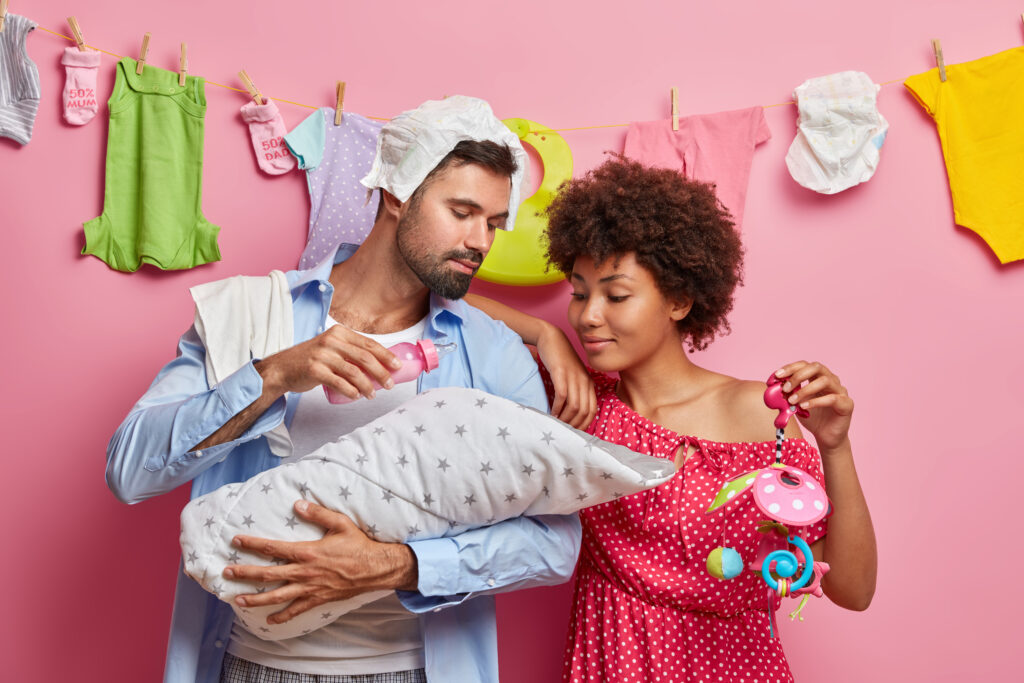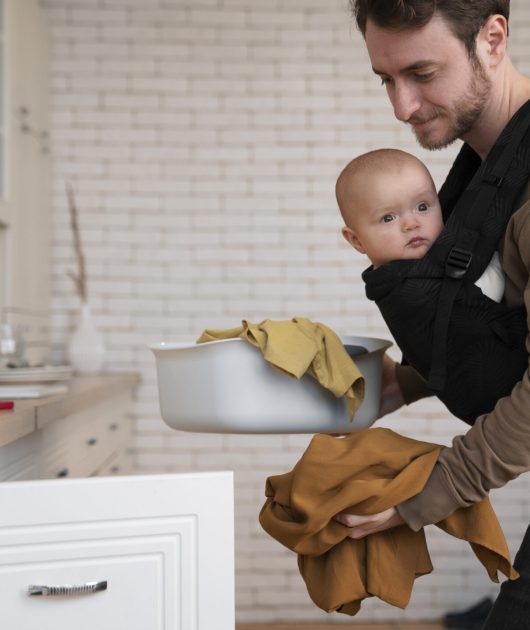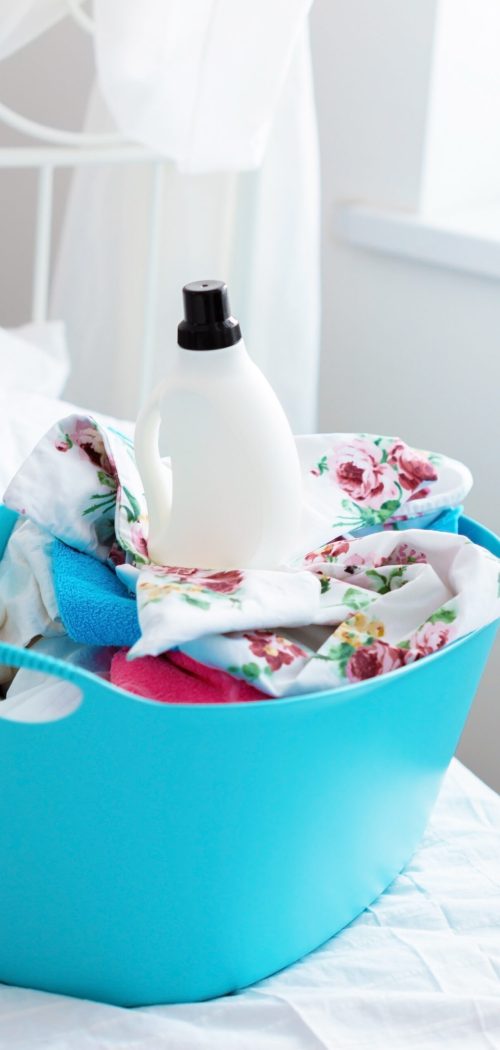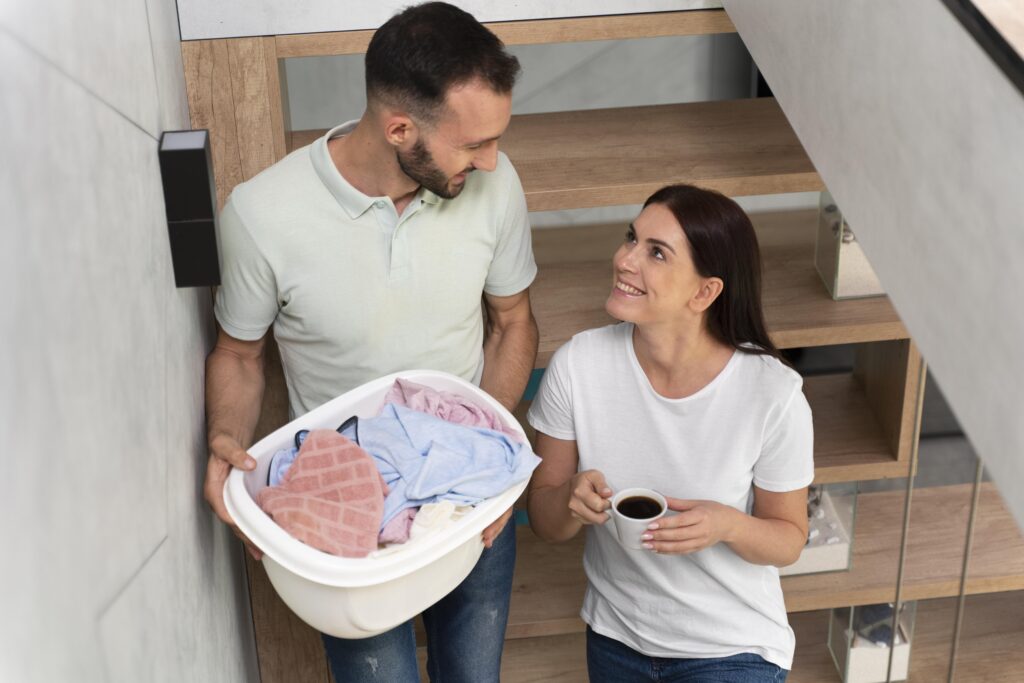How to Wash Newborn Clothing
It’s a happy and exciting time to welcome a newborn into your family. Making sure your child’s clothes are hygienic, soft, and safe for their sensitive skin is one of the most important things you can do as you get ready for their arrival, so you need to know regarding How to Wash Newborn Clothing. It’s important to thoroughly wash newborns’ clothing before they wear it for the first time because of their delicate skin, which is more prone to irritation, allergies, and rashes. We’ll go over how to wash infant clothes step-by-step in this comprehensive tutorial, which also offers advice on how to sort clothes, pick the best detergent, and preserve their quality over time.

Why Is Cleaning Newborn Clothes Important?
It’s critical to comprehend the significance of cleaning infant apparel before beginning the steps and know How to Wash Newborn Clothing:
- Eliminates Chemicals and Residues: Chemicals, dyes, and finishes used in the production of new garments are frequently present. These compounds can irritate a baby’s sensitive skin, and washing helps get rid of them.
- Gets Rid of Bacteria and Germs: During production, packaging, and shipping, clothing may have been touched by several people, which could have exposed it to bacteria and germs.
- Softens Fabrics: When you wash new clothing, the fabric becomes softer and more comfy for your infant to wear.
- Prevents Allergies: Since infants are more prone to allergies, washing their clothing lowers the possibility of allergic reactions. Visit Here

Step 1: Collect your supplies.
Make sure you have the following materials on hand before you begin washing and know properly How to Wash Newborn Clothing:
- Baby-Safe Detergent: Select a detergent made especially for infants. These don’t contain harsh chemicals, colours, or scents that can cause skin irritation for your infant.
- Mild Stain Remover (Optional): If stains are difficult to get rid of, you might require a mild stain remover that is appropriate for infant clothing.
- Washing Machine or Basin: Depending on your preferences, you can either wash clothes by hand or in a washing machine.
- Dryer or drying rack: While air drying is better for infant clothing, a dryer set to low heat can also be utilised.
- Mesh laundry bags: To keep little items like socks and mittens from getting misplaced, they are helpful for washing them.
- Clean Towels: For hand-washing or drying garments.
Step 2: Arrange the Clothes
Sorting your baby’s clothing before washing it helps keep it in good condition and stops colour fading. This is how to arrange them:
- By Colour: To prevent colour transfer, keep whites, lights, and darks apart.
- By Fabric Type: Sturdier materials like cotton should be washed separately from delicate fabrics like lace or muslin.
- By New vs. Used: To prevent cross-contamination, wash hand-me-downs and used clothing separately from new apparel.
Step 3: Pre-Treat Stains
Clothing for newborns is vulnerable to food, nappy leaks and spit-up stains. Before washing, pre-treat any stains you find:
- Determine which stain it is: Treatments for various stains differ. Fruit stains, for instance, might require a different method than milk stains.
- Use a Baby-Safe Stain Remover: Lightly rub a tiny bit of stain remover into the fabric. Before washing, let it sit for ten to fifteen minutes.
Rinse with Cold Water: Rinsing with cold water might help keep fresh stains from solidifying.

Step 4: Select the Appropriate Cleaning Technique
Newborn clothes can be washed in a washing machine or by hand. This is how to accomplish both:
Options 1: Cleaning by Hand
Baby blankets, hats, and booties are among the fragile products best suited for hand washing because they are soft.
- Fill a basin with lukewarm water: Steer clear of hot water as it will shrink sensitive clothes.
- Add Baby Detergent: Add a tiny bit of detergent that is suitable for infants to the water.
- Submerge the Clothes: Gently stir the clothing in the water for a few minutes.
- Rinse Well: To get rid of any detergent residue, rinse every item in cool, clean water.
- Gently Squeeze Out Water: Steer clear of wringing, as this may cause the fabric to expand or break.
Option 2: Cleaning by Machine
Larger loads of infant garments are easier to wash in a machine.
- Use a Gentle Cycle: To reduce wear and tear, use your washing machine’s delicate or gentle cycle.
- Use Lukewarm or Cold Water: Baby garments may shrink or be damaged by hot water.
- Add Baby Detergent: Determine the appropriate amount by following the detergent’s directions.
- Place Small Items in Mesh Bags: This keeps them from becoming misplaced or knotted.
- Don’t Overload the Machine: Overloading might result in excessive wrinkles and hinder the washing of clothes.

Step 5: Let the clothes air dry appropriately
Just as crucial as cleaning baby items is properly drying them. Your options are as follows:
Option 1: Air-drying
The softest technique is air-drying, which also helps maintain the fabric’s quality.
- Hang clothing on a Drying Rack: To ensure even drying, spread the clothing out.
- Steer clear of direct sunshine: Extended exposure to sunlight weakens textiles and fades colours.
- Turn clothing inside out to preserve decorations and designs.
Option 2: Drying by Machine
Use the following advice if you’d rather use a dryer:
- Use a Low Heat Setting: Baby garments may shrink or get damaged by high heat.
- Take Off Clothes Quickly: This minimises the requirement for ironing and avoids creases.
- Check for Shrinkage: Pay attention to sizing because some fabrics may shrink a little after the first wash.
Step 6: Steam or Iron
Ironing can help eliminate wrinkles and further sanitise clothing, albeit it’s not always required:
- To avoid damaging sensitive textiles, use a low heat setting.
- Prints and decorations are protected when ironed inside out.
- Steaming is a kinder option than ironing and is effective on delicate objects.
Step 7: Properly Store Clean Clothes
Store the clothing in a dry, clean location after it has been cleaned and dried.
- Hang dresses or ensembles and fold onesies, trousers and other tiny items.
- To keep clothing fresh, line drawers with fresh paper or linen.
- Steer clear of plastic bags since they can retain moisture and grow fungus.
Extra Advice on Cleaning Newborn Clothes (Products From Amazon)
- Wash Clothes Before the Baby Arrives:Wash your clothes before the baby arrives home to make sure everything is ready to use.
- Wash New Clothes Separately: New clothing could include chemicals or excess dye that can get on other things.
- Steer clear of fabric softeners: their residue may irritate a baby’s skin.
- Examine Care Labels: Always wash and dry according to the manufacturer’s directions.
- Wash Often: To ensure hygiene, wash garments frequently because newborns change their outfits several times a day.
Avoid Common Mistakes
- Regular Detergent Use: Harsh chemicals found in regular detergents might cause skin irritation in infants.
- Overloading the washing machine: This might harm the garments and keep them from getting clean.
- Ignoring the Pre-Wash: To get rid of toxins and residues, always wash new clothing before putting it on your infant.
- Using High Heat: Excessive heat can harm delicate textiles and cause clothing to shrink.
Conclusion
Although it might seem easy, washing newborn garments involves careful attention to detail to guarantee that your baby’s clothing is safe, soft, and clean. You may prolong the life of your baby’s clothing and safeguard their sensitive skin by following the instructions in this guide. Use baby-safe items, wash your garments before using them for the first time, and steer clear of typical blunders like using excessive heat or overloading the washing machine. You’ll be ready to maintain your newborn’s wardrobe’s comfort and freshness with these pointers.
FAQs
- Can infant clothing be cleaned with ordinary detergent?
No, using a detergent that is safe for babies and devoid of harsh chemicals, dyes, and scents is the best option.
- How frequently should I wash clothes for a newborn?
Newborns have sensitive skin and are prone to spills and stains, so wash your clothes after every use.
- Can I use adult clothes to wash baby clothes?
Washing baby clothes separately is the best way to protect them from bacteria and harsh detergents. - Do hand-me-downs need to be cleaned before use?
Yes, in order to eliminate any remaining germs or residues, hand-me-downs should always be cleaned.
- How can stubborn stains be effectively removed?
Wash the garments as soon as you can after pre-treating stains with a stain remover safe for infants. - How to Wash Newborn Clothing?
